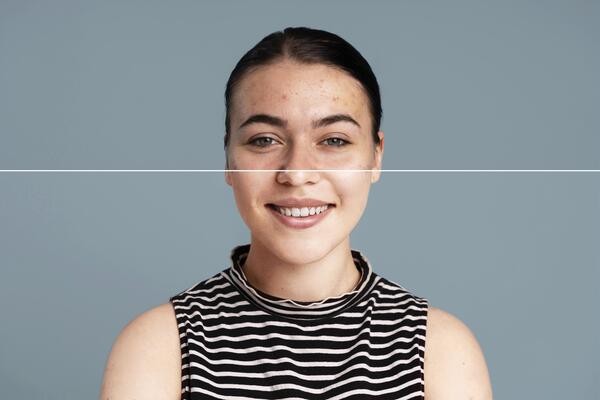
Is There a Way To Fix Uneven Ears?
Uneven ears can take away a person's confidence and make them feel different from others. They may either feel ugly, embarrassed or have a hard time doing their hair.
This is an issue that affects both men and women of all ages, but mostly teenagers because they are at the age where appearance matters more than anything else in the world. Most people consider uneven ears to be a medical condition or deformity that can't be solved with cosmetic surgery.
Many have this idea that uneven ears cannot be fixed no matter how much money one spends on them, while some believe uneven ears to be a myth. This misconception comes from society's view of uneven ears as a "deformity," which implies it cannot be taken care of by plastic surgery.
But these are just rumors. So, is there a way to fix uneven ears?
Yes! It is possible through surgery and the procedures are completely safe and trustworthy. Today, uneven ears are corrected through Otoplasty (Ear Pinning Surgery). Otoplasty can be performed not only on children but adults as well!
Reasons Why You Have Uneven Ears
The unevenness of the ears may be caused due to any one or more of the following reasons:
- The unevenness is congenital (occurring since birth)
- One ear is smaller than the other (microtic ear)
- Hearing loss in one ear has led to an increase in the size of that ear for compensatory reasons
- Injury to the ears due to some kind of accident
- Malformation of the cartilage during development, resulting in uneven curvature of the lobule
The malformation or injury affecting only one ear results in asymmetry between both ears. This may be more pronounced when you compare the ears side by side.
Procedures to Fix Uneven Ears
There are three possible surgical procedures for the correction of uneven ears:
Otopexy
Otopexy is a procedure involving suturing the cartilage of the ear to correct any deformity or defect in it and shifting the position and angle to match that of the other ear.
This is used only for children below 13 years of age. However, adults can undergo this procedure if an Otopexy has been performed on one ear at a young age and there is no significant difference between both ears.
Adults with unevenness due to injury or trauma may also benefit from such surgery. However, Otopexies tend to get less successful once individuals reach their twenties; this is why surgery is always advised at a young age to obtain the best results.
Otopexy with Cartilage Shaping involves pinning the back of both ears, but the surgery may not be able to correct all unevenness because of which Otoplasty alone may perhaps be required for complete correction.
Surgeons sometimes also opt for ear reconstruction after Otopexy for achieving symmetry between both ears. This method is the best choice in cases where unevenness has occurred due to microtic or absent ear lobule (in other words, missing portion of cartilage), as it will ensure that your reconstructed lobe matches your opposite healthy lobe. It can also be used if one ear has been pierced many times and this has led to the loss of cartilage.
Lop-ear Correction
Lop-Ear Correction is done in cases where the ear is retracted at the back, causing it to stick out in front or look droopy.
The surgery can be performed in two ways: with cartilage resection and an upside-down, V-shaped flap. The otopexy will give you an earlobe that matches your other earlobe symmetrically when you compare both sides of your face side by side.
Otoplasty
Otoplasty with Auricular Reconstruction involves four incisions made behind each ear in order to rebuild the entire shape of your ears so that they match both sides evenly or aesthetically. The surgeon corrects unevenness by using extra cartilage from either the ear itself or the rib cage, if necessary. This ensures that even when you flex your ear, there is no unevenness apparent.
This surgery is recommended only when you have uneven ears due to injury or malformation and not congenital unevenness. The success rate for this procedure is high because it ensures total symmetry between both ears and hence, the outcome is pleasing for both the patient and the surgeon.
Otoplasty with Mastoid Surgical Repositioning is done to correct congenital unevenness but it may not be successful if unevenness arises due to trauma or malformation later on in life.
This surgery aims to move the deeper structures of the ear closer together from behind so that a more natural arch can be created between your ear and your cheekbone. The deep pocket at the back of your ear is reduced by removing part of it while stretching the cartilage towards the center.
The results will last for a lifetime because once you have grown fully, your Otopexy cannot be reversed anyway because there would invariably remain scars behind the ears which would again make your ears uneven.
These surgeries allow people with uneven ears to live their life anew, especially otoplasty which has an extremely high success rate. You will be able to resume normal activities after otoplasty has been done because swelling and bruising go down within a week or so.
Hence, the question ‘Is there a way to fix uneven ears’ comes with a positive answer as well as zero risks.
You can start your life fresh with perfect symmetrical ears and need not worry about feeling self-conscious about uneven ears which bothered you for most of your life anymore! Visit our website https://drvsrathore.com to get your uneven ears fixed!
For More Information Follow Us On:
Facebook | Instagram | LinkedIn | Twitter | Google My Business









